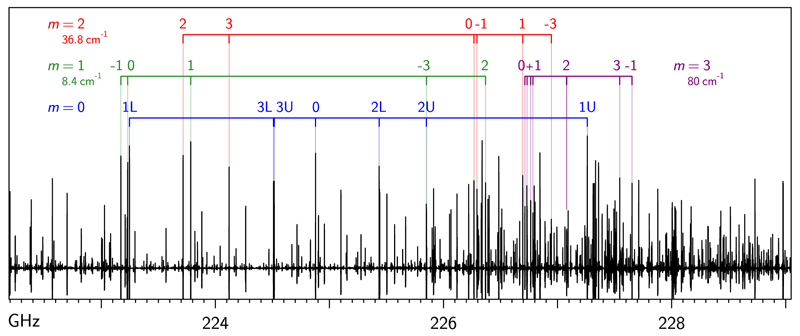Fig. 1.
Room-temperature rotational spectrum of CH3NCO in the J=26−25 transition region. The spectrum is devoid of features that normally aid assignment, such as identifiable progressions of transitions in rotational or vibrational quantum numbers. The visible complexity is due to the presence of nearly free internal rotation of the methyl group (described by the quantum number m) and the low-frequency CNC bending motion. Vibrational energies of the lowest m states relative to the ground state (m=0) and the K assignment are indicated. The high density of states leads to perturbations in frequencies of many transitions, such as the considerable shift to low frequency of the ground state K=3 lines.

